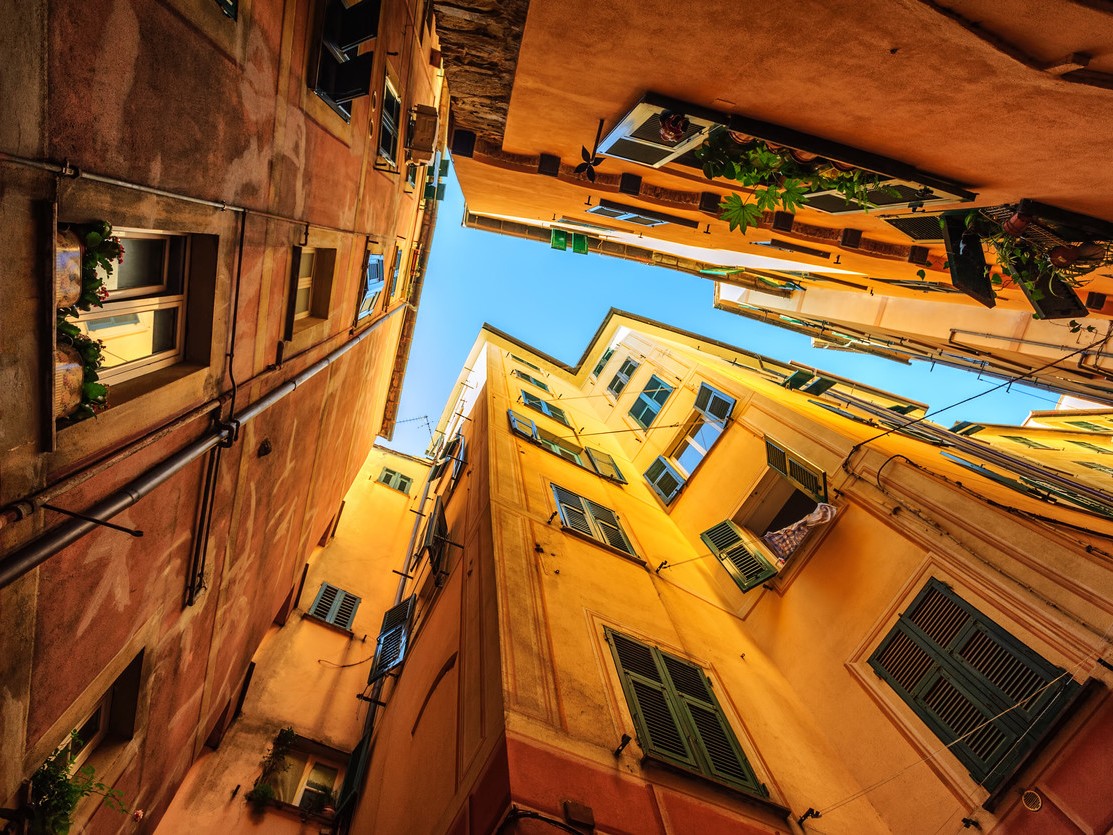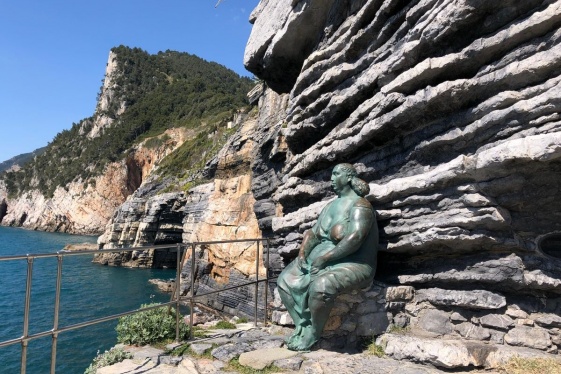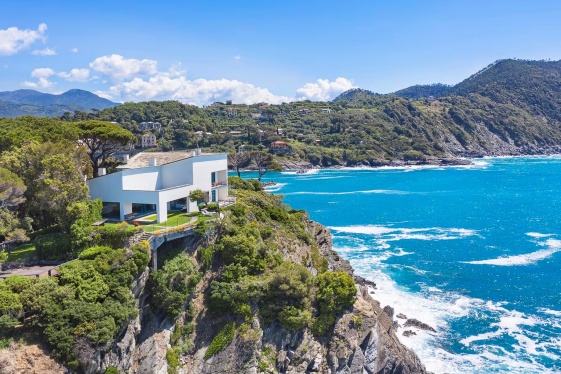

The caruggi (the term likely derives from the Latin word quadrivium, meaning a crossroads of four streets, referring to the maze-like layout) are the narrow alleyways of Genoa’s historic center—an intricate labyrinth where different cultures, languages, and aromas have coexisted for centuries. These stone corridors are so tight that you can touch both walls by stretching out your arms.
Spanning 113 hectares, they make Genoa, the capital of Liguria, one of the most fascinating medieval cities in Europe. This layout was developed between the 11th and 14th centuries, when families who had grown wealthy through maritime trade built up the city, fortifying it with tall walls and an internal arsenal. Today, the entire historic center overlaps with that medieval citadel.
The alleys twist and turn, often opening suddenly into small piazzas, from which even more narrow lanes branch out, offering breathtaking and unexpected views. These squares are home to ancient churches, once bustling centers of faith for pilgrims departing for the Holy Land.
In these same caruggi, alongside the powerful merchant families that brought wealth and influence to the city, lived the common people. They inhabited unsanitary spaces—tiny, cramped dwellings where sunlight barely reached due to the tightly packed buildings and narrow streets. Genoa is a layered city, both culturally and socially, and nowhere is its multicultural character more evident than in these alleyways.
One reason Genoa’s old town features such tight spaces is simply a lack of room—the city is wedged between the sea and the hills. But there's another explanation, one rooted in cleverness and tradition. In the past, property taxes in Genoa were not based on height or number of floors, but on the width of a building’s facade at street level. The wider the house, the higher the tax. Genoese citizens—long known in popular lore for their frugality—came up with a smart solution: they built homes with very narrow bases that expanded upward, stacking one floor on top of another. A brilliant way to maximize living space while dodging the tax bill.
The caruggi also represent a remarkable example of ancient eco-architecture, designed centuries ago to cope with Genoa’s intense summer heat. Because of their narrowness and the towering buildings on either side, these alleys are almost constantly in shadow. This feature acts like a natural open-air air conditioner. The lack of direct sunlight prevents the streets and walls from overheating, resulting in a microclimate that can be up to 10 degrees cooler than sunlit squares just a few steps away.
There was also a safety function to the caruggi. Long before the era of surveillance cameras, Genoa had its own built-in alarm system—based on sound. The tall stone walls and enclosed spaces created a unique acoustic environment where residents could recognize strangers just by the sound of their footsteps. Everyone walks differently: pace, weight, rhythm. In the tight alleys, the stone amplified these sounds, making each person's footsteps as identifiable as a fingerprint. Locals could instantly sense when someone unfamiliar entered their neighborhood. It was neighborhood watch, Genoa-style—long before modern technology.
And speaking of sound, there's another wonder hidden in the caruggi: there's no echo. Instead, you hear the sea. These alleyways act like giant acoustic telescopes, channeling the murmur of waves from the nearby port straight into the heart of the city. The high walls guide the sound, creating a natural waveguide that transmits the voice of the sea through the stone maze. Irregular surfaces and openings quickly break up any echo, but the sound of the surf can travel for hundreds of feet, whispering stories of sailors and distant voyages to anyone wandering through. Genoa literally brings the sea into its core—a perfect fusion of architecture and natural poetry.
Returning to the idea of security, there's one final reason why the caruggi are unlike anything else in the world. What may seem like poor urban planning—alleys so narrow you can’t get a cart or bike through—may in fact have been one of the most ingenious medieval defense strategies ever conceived. According to urban legends, the blind alleys and twisting paths weren’t random but were carefully designed traps for enemies. Invaders unfamiliar with the layout would find themselves drawn deeper into the labyrinth, only to be stopped by a stroke of genius: chains. Because the passages were so narrow, all it took was a heavy chain across the entryway to block it entirely—turning a street into a prison. The Genoese had effectively transformed their city into a giant strategic chessboard. Every dead-end was a potential snare; every blind corner, a hidden danger. A masterpiece of military engineering disguised as urban architecture.
You may be interested
-
'Hidden' Italian paradise for 'authentic' exp...
Brits are absolutely enamoured with Italy, from the ancient allure of Rome's Colosseum to...
-
'Hotel Portofino' Will Transport You to the I...
The appeal of lavish period dramas that depict life in a bygone era is undeniable. But ch...
-
'I visited an often overlooked but beautiful...
My wife and I have fallen for Genoa - hard. We first visited last year in February, and wh...
-
'Mater Naturae'
IN THE IDYLLIC TOWN OF Porto Venere sits a peaceful bronze statue that represents Mother N...
-
'Please stop calling - it was just an idea!'...
The mayor of an Italian village who proposed paying people €2,000 to move there has begged...
-
‘The Little Mermaid’ Living in the Italian To...
The showstopping beach town of Sestri Levante on the Italian Riviera takes the meaning of...
-
‘This Italian holiday location is cheap but f...
When you think about Italy, you may ponder the more expensive parts - Amalfi Coast, Sorren...
-
‘We’re not anti-tourist’: Italy’s picturesque...
Grappling with suitcases and rucksacks, the bewildered-looking crowd that piled off the tr...










